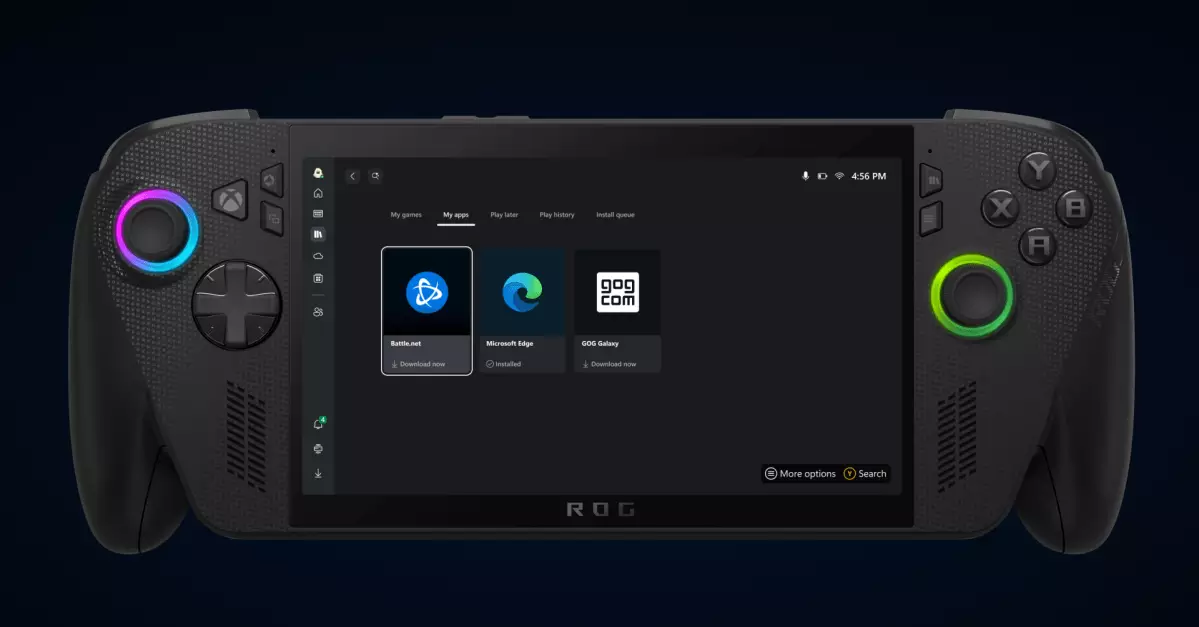Microsoft’s latest experimentation with the “My apps” feature within the Xbox app signals a significant shift in how the company envisions the future of PC gaming. For years, the traditional landscape involved navigating multiple storefronts, desktop applications, and disparate systems to access games and utilities. Now, Microsoft is attempting to streamline this maze by integrating third-party applications directly into its gaming hub. This approach not only enhances convenience but also signifies a bold attempt to blur the lines between gaming, productivity, and everyday computing.
What’s particularly compelling about this move is Microsoft’s recognition that modern gamers often wear multiple hats—streamers, modders, programmers, or casual users—who need quick access to various tools. The introduction of “My apps” acts as a centralized portal, reducing friction and making the gaming experience more fluid and less fragmented. By including browsers like Chrome and utilities such as GOG Galaxy and Battle.net, the company is subtly asserting that PC gaming is no longer isolated—it’s intertwined with broader digital lifestyles.
Breaking Down Barriers: From Storefronts to Seamless Access
Historically, accessing different gaming stores or third-party applications meant toggling between multiple windows or launching dedicated desktop clients, which could disrupt gameplay or focus. Microsoft’s effort to unify these apps within the Xbox interface hints at an evolving strategy to eliminate such barriers. The integration of popular storefronts like Steam, Battle.net, and Ubisoft Connect into a single hub leverages a familiar concept—centralized library management—but extending it to third-party apps signifies a more holistic vision.
This move appears particularly targeted at the rising wave of handheld gaming PCs, such as the ROG Xbox Ally. These devices aim to combine the portability of a handheld gadget with the power of a full-fledged PC. Navigating complex desktop interfaces on such devices can be cumbersome, so embedding app management into the Xbox app enhances usability considerably. This not only improves user experience but also positions Microsoft as a pioneer in handheld PC gaming.
However ambitious this integration is, it’s not without flaws. The beta testing revealed some hiccups—apps failing to install or launch smoothly—highlighting that Microsoft’s vision is still a work in progress. Yet, the willingness to iterate and expand support showcases confidence that this will evolve into a robust and reliable feature over time.
Implications for Microsoft’s Broader Ecosystem
This move resonates with Microsoft’s overarching strategy to position the Xbox app as the central hub for PC gaming. The company’s ambitions go beyond mere game launching; they aim to reimagine the PC gaming experience as a unified environment where all your digital tools coexist seamlessly. The “My apps” feature dovetails with recent efforts to merge the Windows and Xbox ecosystems, creating a cohesive experience that appeals to both hardcore gamers and casual users.
Furthermore, this development underscores Microsoft’s recognition that their success hinges on creating a platform that is attractive to third-party developers and storefront competitors. By enabling easy access to rival storefronts, Microsoft may be attempting to mitigate anti-competitive concerns and foster a more open ecosystem, which ultimately benefits consumers. It’s a nuanced balancing act—supporting its own store while embracing other platforms—have the potential to revolutionize how users think about digital distribution.
Critically, this strategy could serve as a catalyst for wider industry shifts towards more integrated, user-centric interfaces. It challenges the conventional stovepipe approach, where each store or app remains siloed behind isolated UI shells. Whether Microsoft can refine this feature into a reliable, bug-free tool remains to be seen, but the logic behind it is undeniably forward-thinking.
Microsoft’s “My apps” initiative isn’t just a feature update; it’s a declaration of intent. The company seems poised to redefine what a PC gaming environment can be—an inclusive, super-connected digital space that erases the boundaries imposed by traditional storefronts and desktop barriers. If executed well, it promises a future where gamers, developers, and casual users can navigate effortlessly between gaming, browsing, and digital utilities—all within a unified experience. The broader industry will undoubtedly watch with interest, as Microsoft’s gamble on integration could herald a new era of gaming flexibility and innovation.

